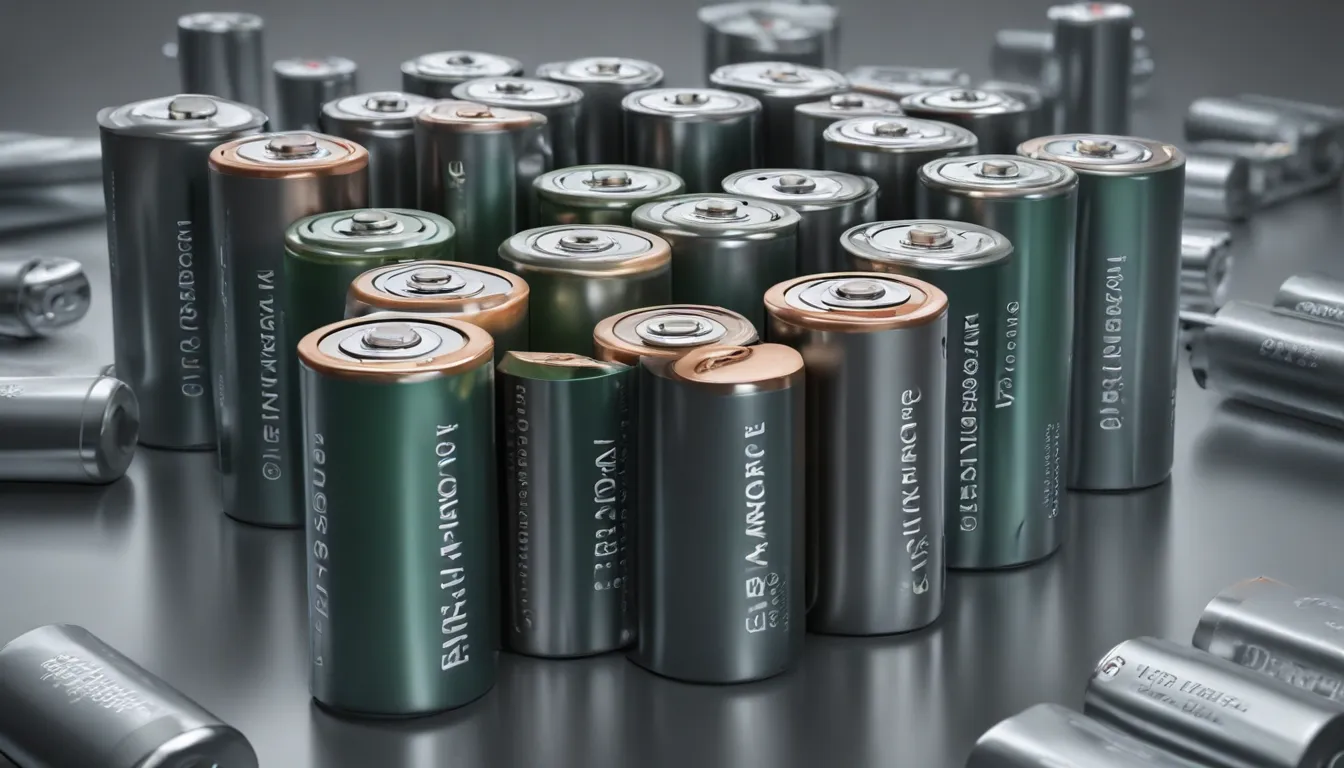A Note About Images: The images used in our articles are for illustration purposes only and may not exactly match the content. They are meant to engage readers, but the text should be relied upon for accurate information.
Welcome to the captivating realm of Nickel-Cadmium (NiCd) batteries, where innovation meets reliability in the world of portable power. Whether you’re powering up household gadgets, essential tools, or emergency systems, NiCd batteries have been a stalwart companion in ensuring seamless performance.
In this enlightening journey, we will uncover 15 intriguing facts about Nickel-Cadmium batteries that will not only intrigue you but also broaden your understanding of this powerhouse technology. From its inception to its environmental implications, we will delve into what sets NiCd batteries apart and how they have evolved over time.
Let’s embark on this adventure together as we unravel the intricacies, applications, and benefits of NiCd batteries, illuminating the hidden depths of these unassuming yet remarkable power sources.
Unearthing the Wonders of Nickel-Cadmium Batteries
Nickel-Cadmium (NiCd) batteries are renowned for their exceptional energy density, allowing them to store a substantial amount of energy within a compact space, making them ideal for various applications.
A Journey of Endurance: The Long Cycle Life of NiCd Batteries
NiCd batteries boast an impressive cycle life, enabling them to endure multiple charge and discharge cycles without significant capacity loss. This durability makes them a perfect choice for devices that require frequent recharging.
Thriving in Adversity: The Resilient Temperature Performance of NiCd Batteries
One of the standout features of NiCd batteries is their ability to perform reliably in extreme temperatures, be it scorching heat or freezing cold. This versatility ensures optimal functionality in diverse environments.
The Art of Conservation: NiCd Batteries and their Low Self-Discharge Rate
NiCd batteries exhibit a low self-discharge rate, allowing them to retain their charge over extended periods of inactivity. This attribute makes them suitable for devices with sporadic usage patterns.
Charging at the Speed of Light: The Fast Charging Capability of NiCd Batteries
Thanks to their rapid charging capability, NiCd batteries offer swift replenishment compared to other battery types. This quick charging feature is invaluable for applications that require immediate power.
Steadfast and Sturdy: The Robust Nature of NiCd Batteries
NiCd batteries are recognized for their robust construction, withstanding rough handling and harsh conditions with ease. Their resilience to shocks, vibrations, and mechanical stress sets them apart as a reliable power source.
Where Versatility Meets Reliability: The Broad Spectrum of NiCd Battery Applications
From portable electronics to medical devices, emergency backup systems, and power tools, the versatility of NiCd batteries spans across diverse industries, showcasing their adaptability and performance.
Thriving Amidst Challenges: NiCd Batteries’ Enduring Performance in Harsh Environments
Whether faced with extreme temperatures, high humidity, or challenging terrains, NiCd batteries continue to deliver unwavering performance, proving their resilience in the toughest of conditions.
Standing the Test of Time: The Long Shelf Life of NiCd Batteries
NiCd batteries boast an extended shelf life, allowing them to be stored for prolonged periods without losing their capacity. This longevity makes them a dependable choice for emergency preparedness kits.
A Balancing Act: NiCd Batteries as a Cost-Effective Solution
In comparison to other rechargeable batteries, NiCd batteries offer a cost-effective power solution, making them a favored option in both consumer and industrial settings.
Power on Demand: The High Discharge Rate of NiCd Batteries
NiCd batteries deliver a high discharge rate, crucial for applications that necessitate a swift and potent energy release, such as electric vehicles and power tools.
Upholding Responsibility: Environmental Considerations with NiCd Batteries
While NiCd batteries excel in performance, it is vital to acknowledge their composition of toxic materials like cadmium. Proper disposal and recycling of NiCd batteries are essential to mitigate their environmental impact.
Monitoring Excellence: Advanced Battery Management Systems for NiCd Batteries
NiCd batteries benefit from sophisticated battery management systems that oversee their charge levels, temperature, and overall health, ensuring optimal performance and safety.
A Lesson in Memory: Navigating the Memory Effect in NiCd Batteries
NiCd batteries are susceptible to the memory effect, which can reduce their capacity over time if not managed correctly. Regular deep discharge and recharge cycles help prevent this phenomenon.
Embracing Innovation: Exploring the Dawn of Alternative Battery Solutions
Despite their established presence, NiCd batteries face competition from emerging battery technologies offering higher energy densities, prolonged cycle lives, and reduced environmental footprints.
Embracing the Legacy of NiCd Batteries
While NiCd batteries have paved the way for portable power solutions, advancements in battery technology have led to the rise of alternative options like Lithium-ion batteries. Understanding the distinctive attributes and evolving landscape of NiCd batteries enables informed decisions and optimal utilization.
FAQs
- What is a Nickel-Cadmium (NiCd) battery?
-
A NiCd battery utilizes nickel oxide hydroxide and metallic cadmium as electrodes, renowned for its high energy density and consistent current output.
-
How long does a NiCd battery last?
-
The lifespan of a NiCd battery varies based on factors like charge cycles and usage conditions. Typically, a well-maintained NiCd battery can endure between 500 to 1,000 charge cycles.
-
What is the memory effect in NiCd batteries?
-
The memory effect refers to a reduction in a NiCd battery’s maximum capacity over time due to incomplete discharge cycles. To combat this effect, periodic full discharges and recharges are recommended.
-
Are NiCd batteries environmentally friendly?
-
NiCd batteries contain toxic elements like cadmium, necessitating proper disposal and recycling to prevent environmental harm. Recycling programs ensure safe handling and recycling of spent NiCd batteries.
-
Can NiCd batteries function in extreme temperatures?
-
NiCd batteries excel in diverse temperature ranges, displaying efficient performance in both high and low temperature environments, making them suitable for various industrial and outdoor applications.
-
Are NiCd batteries still widely used today?
- While NiCd batteries have historically been prevalent, their usage has diminished with the advent of advanced battery technologies like Lithium-ion batteries. Nonetheless, NiCd batteries remain prominent in specialized applications requiring their specific capabilities.
Nickel-Cadmium batteries have left an indelible mark, but as technology progresses, new horizons unfold. Delve into the world of rechargeable batteries and witness the transformation of portable devices. Embrace sustainable energy avenues like biomass, fostering a greener tomorrow. Explore the enchanting realm of electrochemistry and unravel its surprising applications in our daily existence.
Your Feedback Matters
Our unwavering commitment to furnishing reliable and compelling content is the cornerstone of our endeavors. Each fact showcased on our platform is a product of real user contributions, embodying a plethora of diverse insights and information. Our diligent editors rigorously vet each submission, ensuring that the facts we impart are not merely captivating but also credible. Trust in our dedication to excellence and authenticity as you embark on a journey of exploration and enlightenment.





